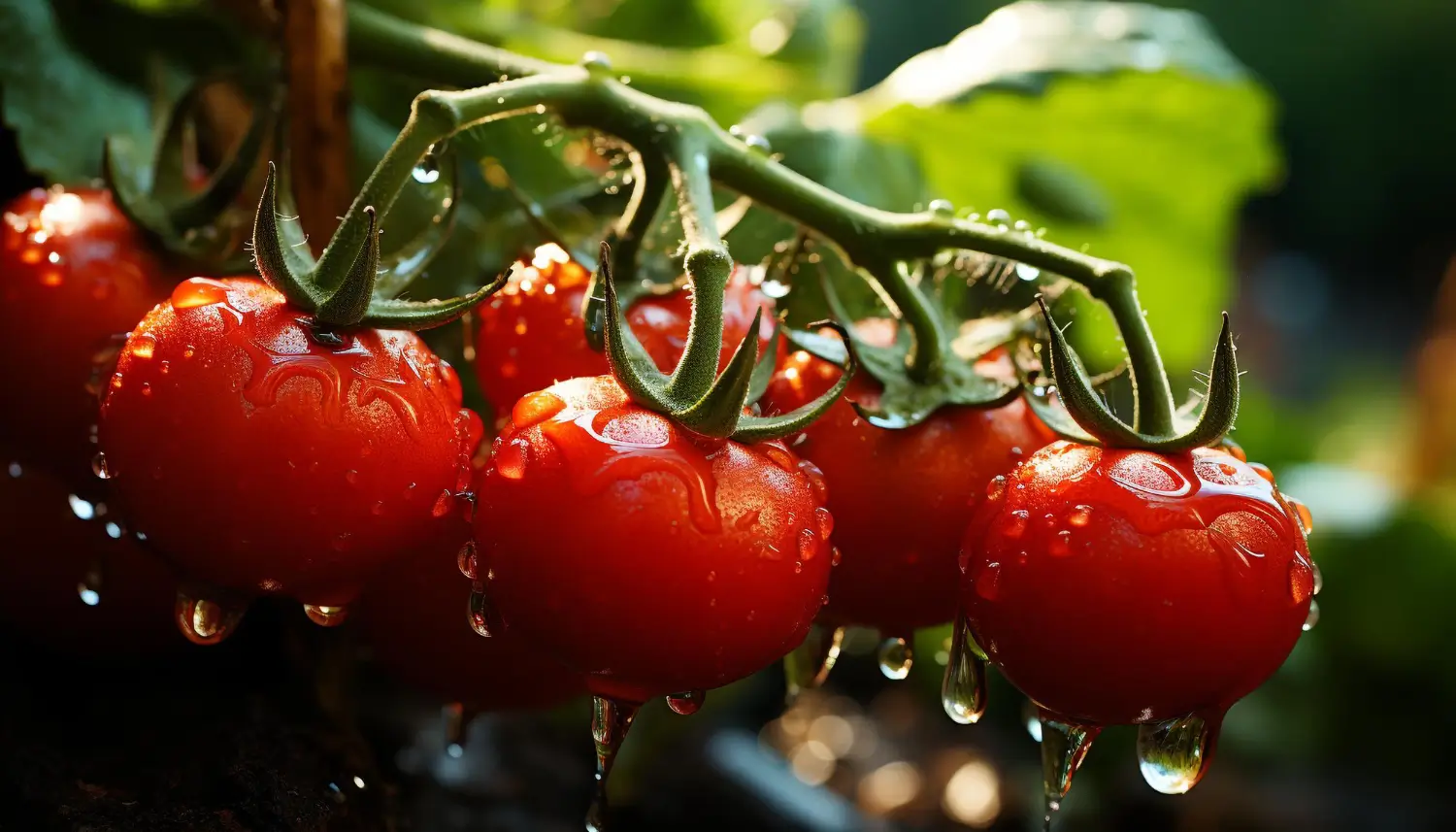
April 29, 2025

The flavor and aesthetic appeal of indoor environments can be improved with homegrown vegetables. Still, growing every plant at home is difficult because each has specific growing cycles, temperature sensitivities, and harvesting methods. These challenges make it hard for gardeners to consider homegrown vegetables and fruit. However, tomatoes are one exception that brings a delicious taste with easy harvesting methods.
Tomatoes are warm-season vegetables that grow annually in multiple colors and sizes. Although they are large vines, they can grow longer in the greenhouse effect, making them suitable for home gardening. In addition to their juicy taste, tomatoes have a strong umami flavor, which is famous in cuisines worldwide.
After years of cultivation, tomatoes are tender perennials available in multiple varieties. Growcycle allows gardeners to choose various vegetable varieties for kitchen gardening, boosting the aesthetic appeal of indoor spaces.
Tomatoes are grown both for their edible fruit and as ornamental or functional additions to home gardens. They are easy to cultivate and thrive in a variety of conditions, making them popular for home gardening.
Tomatoes are one of the most widely cultivated and consumed fruits globally. Here are their primary characteristics:
As tomatoes have multiple varieties, they do not carry the same appearance; they vary in various things, such as:
Tomatoes have a unique flavor that is both sweet and tangy. The taste can vary depending on the type and ripeness of the tomato. When fresh, they have a pleasant smell that strengthens when gardeners cut them. Some tomatoes, especially the smaller varieties, are sweeter, while others taste more acidic. This balance of flavors makes them a popular ingredient in many dishes.
Tomatoes are very nutritious. They are low in calories but packed with vitamins and minerals. They are especially rich in Vitamin C, Vitamin K, and Vitamin A. Tomatoes also contain antioxidants like lycopene, which is believed to be good for health. They are also a good source of fiber, which helps digestion and keeps the body healthy. With a high water content, tomatoes are hydrating and refreshing to eat.
Growing tomatoes at home provides fresh, flavorful tomato production and offers benefits such as:
There are several types of homegrown tomatoes, each with its own characteristics and growing requirements. Here are some of the most popular types
| Type of Tomato | Size | Shape | Flavor | Use | Growth |
|---|---|---|---|---|---|
| Cherry Tomatoes | Small (marble-sized or smaller) | Round or slightly oval | Sweet and tangy | Snacking, salads, garnishes | Fast-growing, suitable for small spaces |
| Roma (Plum) Tomatoes | Medium | Oval or plum-shaped | Rich, concentrated flavor | Sauces, pastes, canning | Determinate (produces all fruit at once) |
| Beefsteak Tomatoes | Large (often over 1 lb) | Large, round, or slightly flattened | Mild, juicy, slightly sweet | Sandwiches, burgers | Indeterminate (continues growing throughout the season) |
| Grape Tomatoes | Small | Oval, resembling a grape | Sweet and tangy, firm texture | Salads, snacking, roasting | Indeterminate, fast-growing |
| Heirloom Tomatoes | Varies (often large) | Irregular, unique shapes/colors | Full-bodied, rich, varied flavor | Determinate or indeterminate | Determinate or indeterminate |
Here is a step-by-step guide to growing healthy tomatoes at home:
To grow tomatoes at home, it is important to choose the right type. Some varieties are better for small spaces, while others need more room to grow. There are also different types for different tastes, such as small cherry tomatoes for snacking or larger ones like Roma tomatoes for making sauces.
If growing from seeds, start them indoors about 6-8 weeks before the last frost in the area. Use small pots or trays with holes for drainage. Plant the seeds in a lightweight seed-starting mix, and keep the soil moist. Place the pots in a warm, sunny area or under grow lights to help the seeds grow strong.
Tomatoes need a sunny spot to grow well, so choose a place that gets 6-8 hours of sunlight each day. The soil should be well-draining, rich in nutrients, and slightly acidic with a pH of 6.0-6.8. Before planting, mix in compost or well-rotted manure to improve the soil.
When the frost has passed, and the soil is warm enough, it is time to move the plants outside. Plant them at least 18-36 inches apart, depending on the variety. When planting, bury part of the stem to help the plant grow more roots. It is also a good idea to install stakes, cages, or trellises at this time to help the plants stay upright as they grow.
Tomatoes need regular watering. It is important to keep the soil moist but not too wet. Water deeply to help the roots grow strong. Adding fertilizer will also help the plants grow well. A balanced fertilizer works initially, but as the plants grow and produce fruit, they switch to one with more potassium and phosphorus to support fruit development.
Here are the essential care tips for healthy tomato growth:
Tomatoes need a lot of sunlight to grow well. They should receive at least 6-8 hours of direct sunlight each day. The more sunlight they get, the better they will grow and produce fruit.
Tomatoes grow best in warm temperatures. Ideal temperatures for healthy growth are between 70°F and 85°F (21°C to 29°C) during the day. Night temperatures should stay above 50°F (10°C). Too much cold or hot weather can stunt growth and damage the plants.
Tomatoes need enough space to grow properly. Plant them 18-36 inches apart, depending on the variety. Providing support such as stakes, cages, or trellises helps the plants grow upright and keeps the fruit off the ground, which reduces the risk of disease and makes harvesting easier.
Pruning helps keep tomato plants healthy and productive. Remove suckers, which are small shoots growing between the main stem and branches, as they can take energy away from fruit production. Also, yellowing or dead leaves should be removed to improve airflow and reduce disease risk.
Watch for pests such as aphids, whiteflies, and hornworms. If pests are found, use natural remedies like neem oil or insecticidal soap to manage them. It’s also important to prevent diseases like blight and mildew by ensuring proper spacing for airflow, watering at the base of the plant, and rotating crops each year
Harvesting tomatoes at the right time ensures the best flavor and texture. Here is how to do it:
Tomatoes are ready to be harvested when they are fully colored and slightly soft to the touch. For most varieties, this means the fruit will have turned its mature color—usually red, but it can also be yellow, orange, or purple, depending on the type. Cherry and grape tomatoes should be firm and fully colored.
Pick tomatoes regularly to encourage the plant to produce more fruit. If growers leave ripe tomatoes on the vine too long, they can attract pests and become overripe, which affects flavor and texture.
Homegrown tomatoes are versatile and can be used in various dishes to improve health, such as:
Tomatoes are very versatile and can replace other ingredients in many dishes:
Can regular potting soil work best for tomatoes?
Although regular soil potting can work for tomatoes, it may not provide a specific nutrient balance. Hence, the best healthy growth solution is adding organic compost to the soil.
Do tomatoes need a lot of space to grow?
Yes, tomatoes require significant space to spread their roots and grow properly. When planted in the garden, they need to be at least 2 feet apart for proper air circulation and root development.
What are the best tomato varieties to grow at home?
Smaller varieties, such as cherry tomatoes, are best to grow at home due to their compact size.
Tomatoes are a favorite perennial that adds a juicy, delicious taste to various dishes. They can also treat many health-related issues with little care, making them excellent for growing at home. The best-trailing vine growth can add decorative appeal to home gardens or indoor spaces.
With proper care, ripened tomatoes can be stored for a year for later use. Growcycle helps gardeners choose the right tomato varieties for healthy, vibrant vegetables and fruits.
Disclaimer: This material is for informational purposes only and should not be relied on for legal, medical, financial, or any other form of professional advice.